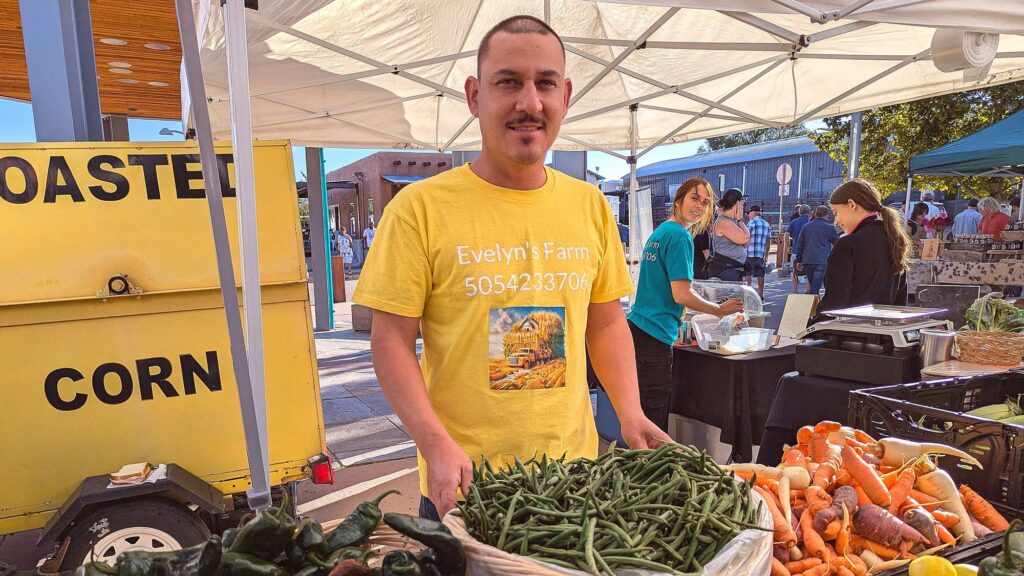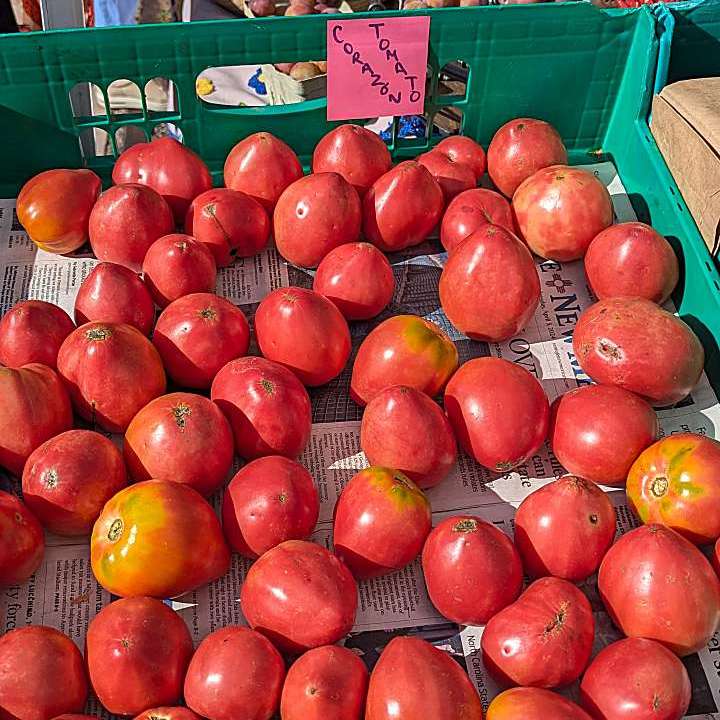
We first visited northern New Mexico back in the 1990s to write about chile peppers being bred at New Mexico State University’s extension service farm. Rather than develop hybrids, the breeders were cross-pollinating traditional chiles with desirable characteristics to develop chile peppers with various heat levels that were suitable for different growing conditions. In other words, they were taking a scientific approach to seed selection the way farmers have been doing it since the advent of agriculture roughly 12,000 years ago.

This fall, at the Santa Fe Farmers’ Market, we discovered that the practice is alive and well with all sorts of plants. We spotted a chip-n-dip bowl with three piles of diced tomatoes and a jar of toothpicks. “Free samples” the sign advertised. Post-It notes labeled the choices as Roma, Green Zebra, and Corazón. All three were delicious, but we were especially taken with the Corazón, Spanish for “heart.” It had good acidity, a surprising sweetness, and a high flesh-to-jelly proportion.
We were hooked. The tomatoes were grown at Evelyn’s Farm (85 Upper San Pedro Road, Española, New Mexico; 505-423-3706). A line of folks buying roasted corn slathered with butter and sprinkled with cheese nearly hid the farm’s fresh produce.
We spoke with owner Carlos Aracely Orozco, who had named the farm after his daughter, one of the two women selling roasted corn.
“Corazón is kind of my own personal hybrid,” he explained. It is a field cross between Roma paste tomatoes and the popular heirloom slicer Brandywine. As it turns out, the cross breeds true, which is to say, seeds saved from Corazón tomatoes will produce plants that yield the heart-shaped fruits the next year. Like Romas, Corazón have relatively few seeds. Like Brandywines, they are dense and full of intense tomato flavor.
Looking ahead to next year’s garden
We asked Carlos if he minded if we tried growing our own from seeds in the rather large bag of tomatoes we had purchased. He said it was no problem but directed us to his worker who handles seed-saving for the farm.

“Do you ferment the seeds you save?” the man asked when we broached the subject of seed saving. “You probably get okay germination by just letting them dry out, but fermenting them strips off all the remaining flesh. It’s a good way to avoid mold or contamination.”
We professed ignorance. “Just Google ‘saving tomato seeds’ and you’ll see how to do it,” he explained. It’s just a matter of adding water to the jelly and seeds, letting it sit undisturbed until it forms a gray scum on top, and then cleaning the seed.”
We did consult Santa Clara (California) County Agricultural Extension’s directions (mgsantaclara.ucanr.edu/files/245049.pdf) and learned that good seeds sink while bad ones float. Our particular fermentation took about four days before the gray top layer formed. We peeled it off carefully, then added more water to see if we had any floaters. Not a one. So we rinsed the seeds in a fine mesh sieve until the flesh and jelly were washed away. In our final step, we laid them out in a single layer on newsprint to dry (see above). Yield was about 100 seeds from three tomatoes. .
Next March, we’ll find out how well the technique worked.
